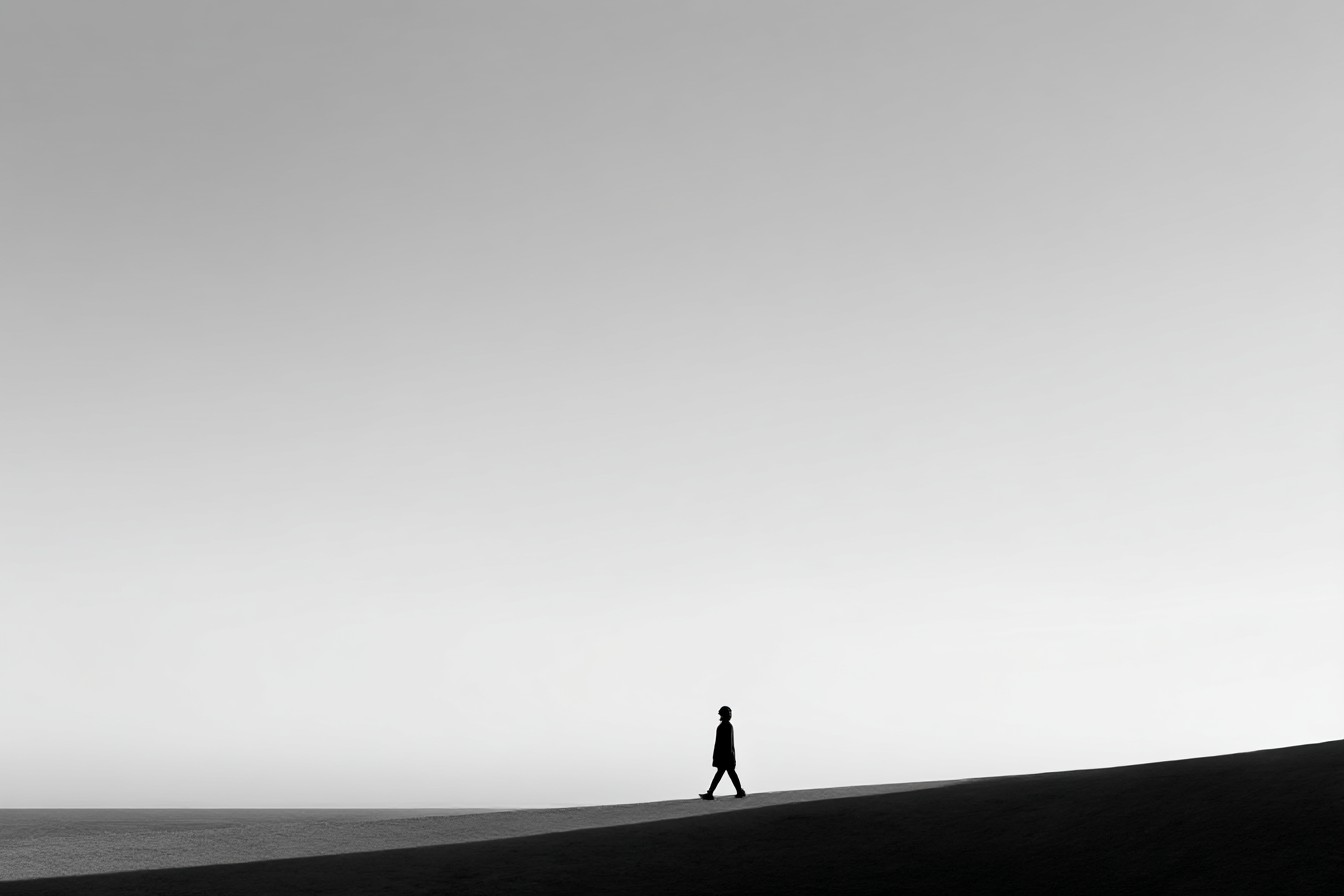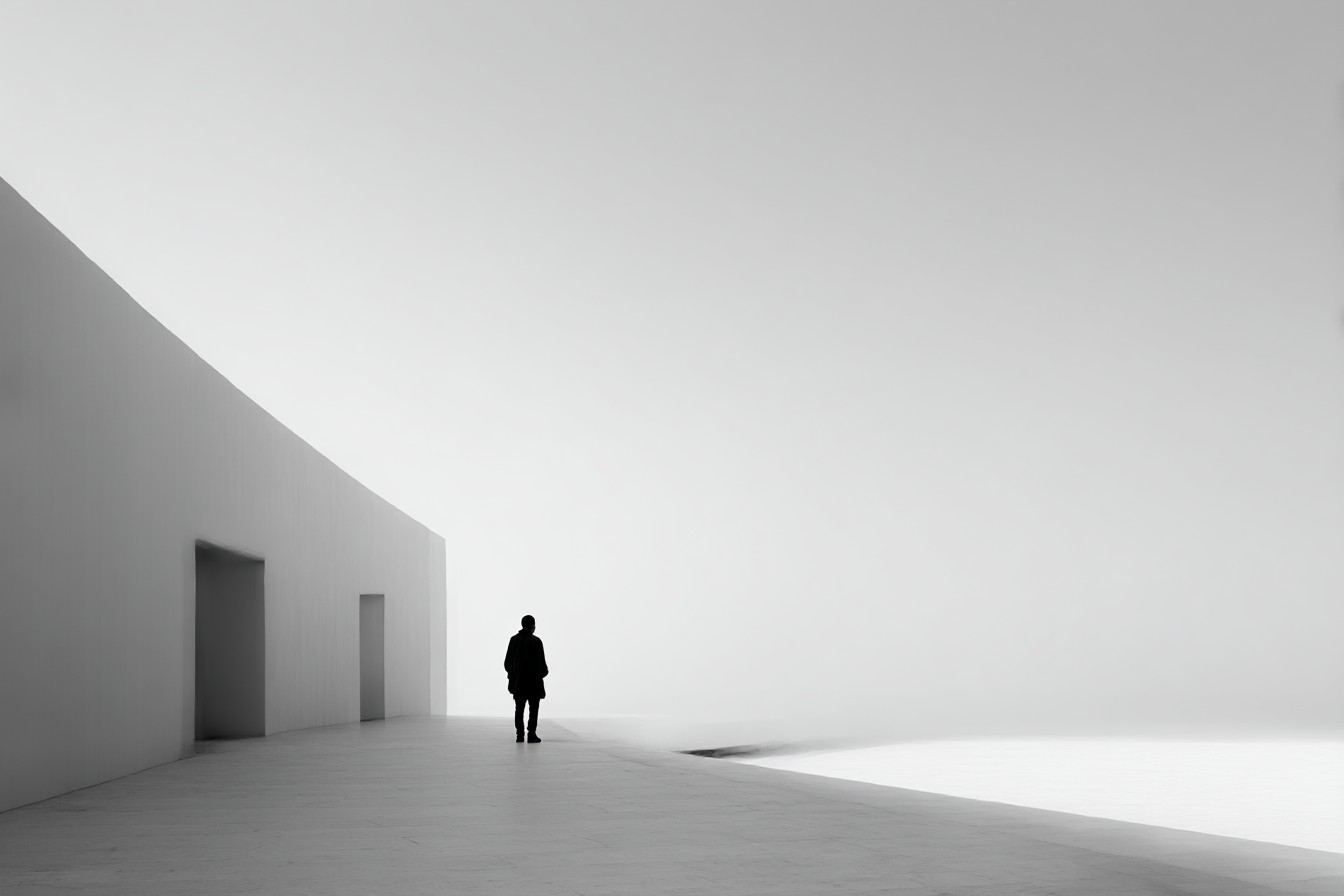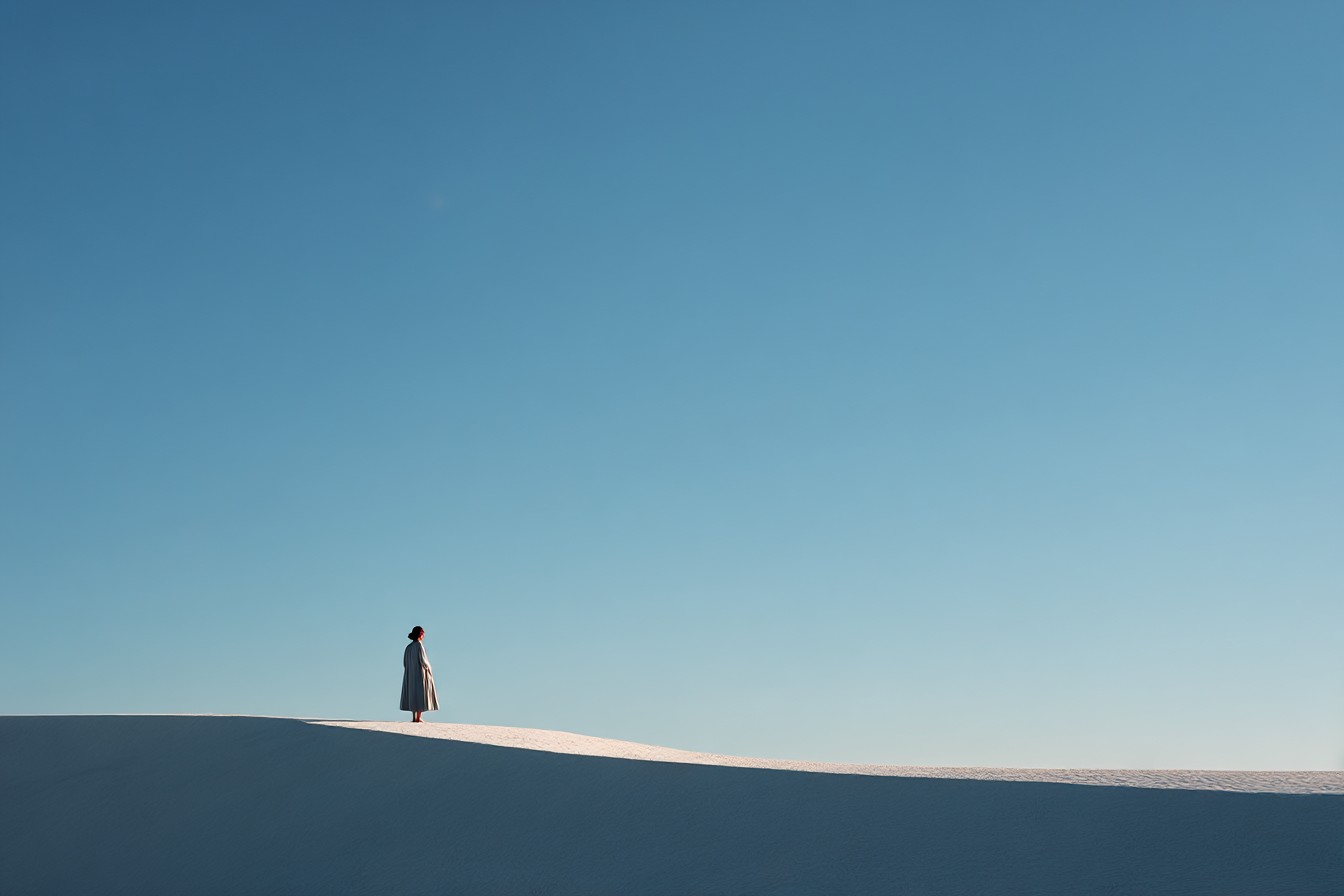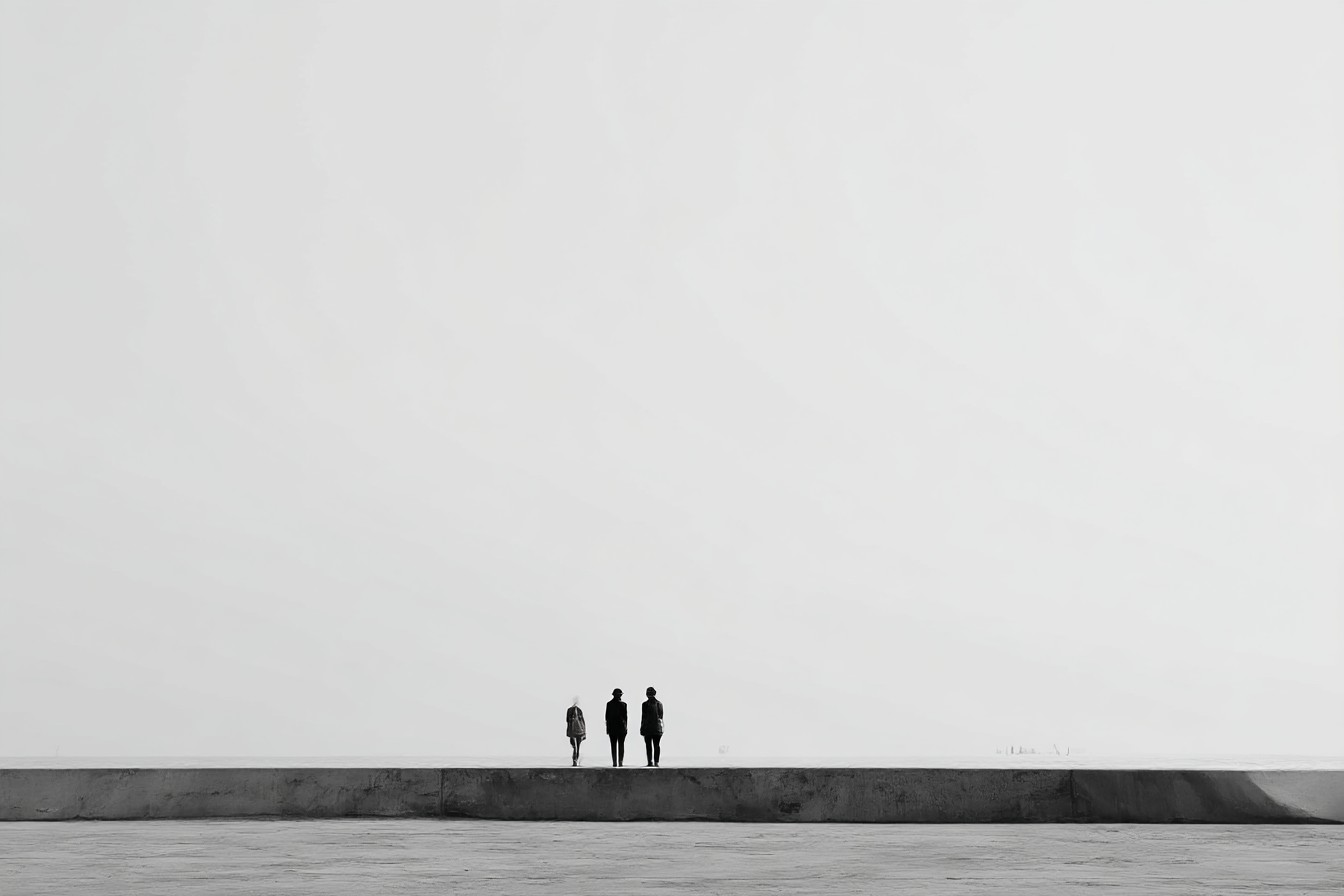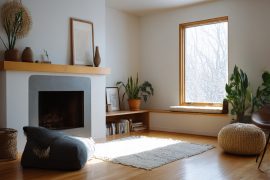I never thought I’d become obsessed with empty spaces. Or rather, with what little remains when everything else is cleared away. It happened slowly, this love affair with photographic minimalism. You know how sometimes the most meaningful shifts in your life sneak up on you? That’s how it was with me and my camera.
About six years ago, I was lugging around my hefty DSLR and three lenses through the chaos of Camden Market. It was a photographer’s dream – vibrant colours, eccentric characters, layer upon layer of visual stimuli. I took hundreds of shots that day, frantically trying to capture everything. When I got home and uploaded them, I had a moment of clarity that, looking back, changed everything. Every single image looked busy, cluttered, and completely forgettable.
There was this one accidental shot though – taken when I thought I’d turned the camera off. Just a solitary red umbrella against a vast grey stone wall. Nothing else. And somehow, that was the only photo from the entire day that made me feel something.
That’s the funny thing about minimalist photography, isn’t it? It’s not actually about what you include in the frame – it’s about what you deliberately leave out.
I remember showing my photo club that umbrella shot, feeling a bit embarrassed by its simplicity. “This is brilliant,” said Jim, our club president and perpetual critic. “You’ve finally stopped shouting and started whispering.” I must’ve looked confused because he laughed and added, “Sometimes a whisper makes people lean in and listen more carefully than a shout ever could.”
The following weekend, I found myself wandering around with a different mindset. Rather than trying to cram every interesting element into my viewfinder, I started asking myself: “What can I remove from this scene?” It felt counterintuitive at first – like I was somehow cheating by photographing “less stuff.” But blimey, was it liberating!
My first deliberate minimalist shoot was at Brighton Beach on a foggy Tuesday morning. The pier was barely visible, just these ghostly silhouettes emerging from the mist. I focused on a single wooden post sticking out of the water, waves gently lapping around it. Just one object, surrounded by negative space. The resulting image had this meditative quality that none of my previous work had achieved.
Here’s what I’ve learned about creating impactful minimalist photographs: it’s bloody hard work! There’s nowhere to hide your mistakes. Every element that remains in the frame has to earn its place, has to contribute something meaningful. A slightly crooked horizon or poor composition sticks out like a sore thumb when there’s nothing else to distract the viewer.
Colour (or the lack of it) becomes incredibly important in minimalist photography. After experimenting for months, I found myself gravitating toward three approaches. First, the monochromatic route – shooting in black and white creates instant simplicity. Second, isolating a single bold colour against a neutral background – like that red umbrella against the grey wall. And third, working with a severely limited palette – perhaps just two complementary colours in the entire image.
I remember this spectacular failure trying to photograph the London Eye. I kept backing up, trying to find a clean composition with nothing but the wheel against the sky. Ended up nearly falling into the Thames! A lovely elderly couple pulled me back from the edge and the woman said, “Perhaps you should photograph something else, dear.” She was right, of course. Not every subject lends itself to minimalism. I’ve learned to recognize when a scene has minimalist potential and when I’m fighting a losing battle.
Negative space became my new best friend. That emptiness around your subject? It’s not actually empty at all – it’s working tremendously hard to give your main element context, scale, and emotional impact. I started thinking of negative space as an active ingredient rather than an absence.
Weather conditions become crucial allies (or formidable enemies) in minimalist photography. Fog is an absolute gift – nature’s own way of simplifying a chaotic scene. Heavy snow works similarly, creating these pristine white canvases where a single element can stand out dramatically. Bright, cloudless days? Absolute nightmare for minimalist work – too harsh, too much definition, too many shadows competing for attention.
The most challenging aspect, for me anyway, was learning to slow down. I used to rush about, firing off dozens of shots of the same subject from slightly different angles. Now I might spend an hour just observing a simple scene – watching how the light changes, how shadows move, waiting for that perfect moment when everything aligns. My friends think I’ve gone slightly mad when I tell them I took just three photographs during a day-long shoot. “But what were you doing all that time?” they ask. “Seeing,” I tell them. “Mostly just seeing.”
Equipment-wise, I went through an interesting evolution. Initially, I thought minimalist photography meant I needed to strip down my gear as well – sold most of my lenses, simplified my setup. Then I realized that sometimes achieving simplicity in the final image actually requires technical complexity in the capture. Now I often use a telephoto lens for minimalist work – it compresses perspective and helps isolate subjects from busy backgrounds. My 70-200mm has become my go-to lens for creating clean, simple compositions.
Post-processing is where I probably differ from many minimalist photographers. While some believe in minimal editing to match the minimalist aesthetic, I’ve found that sometimes significant manipulation is necessary to achieve the simplicity I envisioned. I might spend hours removing tiny distractions from an otherwise clean scene – a stray piece of litter, telephone wires, distant figures that draw the eye. Is this cheating? I don’t think so. It’s simply using every tool available to communicate the feeling of simplicity I experienced in that moment.
Composition becomes everything in minimalist photography. The rule of thirds still applies, but with even greater importance when there are fewer elements in the frame. I’ve become particularly fond of central composition for truly minimal subjects – placing a solitary object dead center creates this powerful sense of isolation and importance. Symmetry, too, becomes a valuable tool for creating order and calm in an image.
After about a year of practicing this approach, something unexpected happened – my non-photographic life started changing too. I found myself drawn to cleaner spaces, simpler clothing, fewer possessions. There’s this curious feedback loop between how I photograph and how I live. As I trained my eye to find beauty in simplicity through the viewfinder, I began noticing it everywhere else too.
I’ve failed far more than I’ve succeeded with minimalist photography. For every clean, powerful image in my portfolio, there are dozens that missed the mark – too empty, too sparse, lacking that essential emotional connection. The line between beautifully minimal and blandly boring is razor-thin, and I still cross it regularly.
What makes a minimalist photograph work? After all these years, I’m still figuring it out, but I believe it comes down to tension. There needs to be some form of visual or emotional tension that holds the viewer’s attention despite the simplicity. Perhaps it’s the tension between a tiny subject and the vast space surrounding it. Or between perfect stillness and implied movement. Or between what’s shown and what’s merely suggested.
Teaching minimalist photography workshops has forced me to articulate what had previously been intuitive. “Look for what isn’t there,” I tell my students, watching their confused expressions. “Photograph the spaces between things.” More confusion. Then I show them examples, and gradually those lightbulb moments happen. There’s nothing quite like watching someone’s entire photographic perspective shift before your eyes.
The most valuable lesson minimalist photography has taught me is patience. The willingness to wait for the right moment, the perfect light, the ideal conditions. To return to the same location again and again until everything aligns. And sometimes, to walk away empty-handed rather than compromise on my vision.
So if you’re interested in minimalist photography, here’s my advice: slow down. Way down. Look for scenes that already contain elements of simplicity rather than trying to force minimalism onto chaotic environments. Embrace constraints – limit yourself to one focal length, one subject, one technique. And remember that simplicity in the final image doesn’t mean the process of creating it will be simple.
The umbrella photo still hangs on my wall. Not because it’s technically brilliant – it isn’t. But because it reminds me of that moment when I first understood that sometimes, less truly is more. In photography, and perhaps in everything else too.
